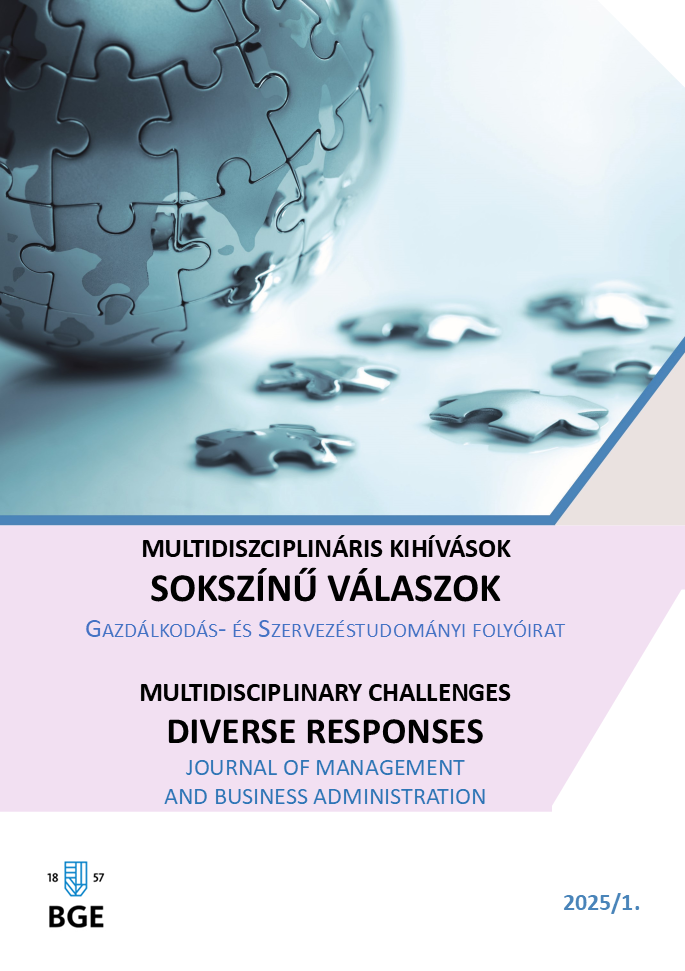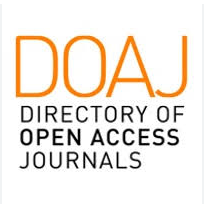The Culture of Elegance
The Role of Fashion in International Relations and Communication
Abstract
Although the canonisation of fashion diplomacy is still in progress, it is increasingly emerging as a subject of scholarly discourse. This growing attention stems from the fact that in an ever more globalised world, soft power is exerted across “softer” domains. Simultaneously, there is a pressing need for novel pathways that foster unity and mutual respect while avoiding the scepticism often directed at traditional diplomatic practices. Fashion diplomacy may be understood as a complex social code capable of transmitting meaning, while also functioning as a site of intercultural mediation that encompasses both cultural and economic dimensions. This study explores the practical application of fashion diplomacy among Hungarian diplomats serving in diverse geographical and cultural contexts. Drawing on responses from seventeen Hungarian embassies, the research maps the role of dressing in diplomatic practice and examines the extent to which it is employed as a strategic instrument. The findings suggest that the significance of attire is recognised across all cultural contexts under investigation; however, notable differences emerge in the degree and manner of its application. Fashion diplomacy appears most prevalent among diplomats stationed in Western cultural settings, whereas in the Middle East its use is shaped by lower levels of female participation and prevailing social constraints. The research further addresses the distinctive role of female diplomats and engages with the issue of cultural appropriation. Overall, the study concludes that fashion diplomacy constitutes an effective tool for communication and image-building, contributing meaningfully to diplomatic success across varied cultural environments.
References
Albright, M., 2009. Read My Pins: Stories from a Diplomat's Jewel Box. New York: HarperCollins
Allison, G., 2008. The Cuban Missile Crisis. In S. Smith, A, Hatfield & T. Dunne, eds., 2008. Foreign Policy. Oxford: Oxford University Press. pp. 208-228.
Anagondahalli, D. & Zhu, L., 2015. Culture's role in public diplomacy: predicting and preventing crises. The Journal of International Communication. 22(1), 64-81. https://doi.org/10.1080/13216597.2015.1076733
Asafo-Adjei, S., 2020. The Promotion of Cultural Diplomacy Through the Use of African Print Fashion: The case of Ghana. [Master’s thesis, University of Ghana]. Accra: Legon Centre for International Affairs and Diplomacy, University of Ghana Elérhető: http://ugspace.ug.edu.gh/handle/123456789/35175 (2025.03.16.)
Bauknecht, S., 2017. The politics of style: What messages do first ladies send trough their fashion?. [online] Elérhető: https://www.post-gazette.com/life/fashion/2017/07/17/Melania-Trump-style-Michelle-Obama-fashion-trends-first-lady/stories/201707170004 (2025.03.16.)
Baldwin, D. A., 2000. Success and Failure in Foreign Policy. Annual Review of Political Science, 3, 167-182.
Barrington, A., 2020. Women in Diplomacy: The Equality Agenda, Diplomatica 2(1), 154-162. Elérhető: https://brill.com/view/journals/dipl/2/1/article-p154_154.xml (2025.05.22.)
Bond, K., 2025. "Fashion does matter – why what Kate wears will always be important" [online] Elérhető: https://www.harpersbazaar.com/uk/fashion/a63662403/kate-princess-of-wales-clothes-designers/ (2025.05.25.)
Brand Finance, 2018. British Luxury 2018 [online] Elérhető: https://www.dropbox.com/scl/fi/pml7dxc18zbo5td7ay97v/Brand-Finance-Report-25.10.18.pdf?rlkey=ly0j9ox91j4h97jcnrw6okjfw&e=3&dl=0 (2025.03.16.)
Bulur, Ö., 2016. Fashion diplomacy: More than simply a wardrobe choice [online] Elérhető: https://www.dailysabah.com/feature/2016/10/24/fashion-diplomacy-more-than-simply-a-wardrobe-choice (2025.03.16.)
Carmi, N., Alsayegh, M., & Zoubi, M., 2019. Empowering women in water diplomacy: A basic mapping of the challenges in Palestine, Lebanon and Jordan. Journal of Hydrology. 569, 330-346 https://doi.org/10.1016/J.JHYDROL.2018.12.011
Colombo, E., 2015. Multiculturalisms: An overview of multicultural debates in western societies. Current Sociology, 63, 800-824. https://doi.org/10.1177/0011392115586802
Dubinsky, I., 2021. China’s Stadium Diplomacy in Africa. Journal of Global Sport Management, 9(4), 761–778. https://doi.org/10.1080/24704067.2021.1885101
F. Dósa, K., Szatmári, J. A. & Szentesi, R., 2018. Divat, kultúra, történelem. Divattörténeti tanulmányok. Budapest: Eötvös Kiadó
Ferrier, M., 2016. Fashion diplomacy? 'Kate Effect' is alive and well. [online] Elérhető: https://www.theguardian.com/uk-news/2016/apr/16/fashion-diplomacy-kate-effect-is-alive-and-well (2025.03.16.)
Fillingham, H., 2020. How Kate Middleton pays tribute with her outfits on her royal. [online] Elérhető: https://www.hellomagazine.com/fashion/news/gallery/2020031286088/kate-middleton-displays-diplomatic-dressing-royal-tours/1/ (2025.03.16.)
Forintos-Szűcs, A., 2022. július 08. Személyes interjú
Friedman, V., 2021. In Pakistan, Kate Middleton Aces Fashion Diplomacy. [online] Elérhető: https://www.nytimes.com/2019/10/18/fashion/kate-middleton-pakistan-fashion.html (2025.03.16.)
Halász, I., 2010. Diplomácia és diplomaták. Budapest: Aula Kiadó
Hallberg, M., 2017. The Princess Charlotte Effect Is Very Real. [online] Elérhető: https://observer.com/2017/05/princess-charlotte-effect-net-worth-royals/ (2025.03.16.)
Hossó, N., 2015. Protokoll a diplomácia és a nemzetközi kapcsolatok hátterében. Budapest: L’Harmattan
Hungarian Fashion & Design Agency (n. d.) Nemzeti Divatipari Stratégia 2020-2030 [online] Elérhető: https://hfda.hu/documents/prod/Nemzeti-Divatipari-Strategia-2030-v0531_1.pdf (2025.03.31.)
Ibanez-Tirado, D., 2016. Gold teeth, Indian dresses, Chinese lycra and ‘Russian’ hair: Embodied diplomacy and the assemblages of dress in Tajikistan. Cambridge Journal of Anthropology, 34(2), 23-41. https://doi.org/10.3167/ca.2016.340203
Karamy, S. E., 2020. West Java’s Fashion Diplomacy to South Australia: A Model of Sister Province. Tourism and Sustainable Development Review Journal, 1(2), 65-75. https://doi.org/10.31098/tsdr.v1i2.5
Khan, R., 2019. ‘Be creative’ in Bangladesh? Mobility, empowerment and precarity in ethical fashion enterprise. Cultural Studies, 33(6), 1029–1049. https://doi.org/10.1080/09502386.2019.1660696
Kreft, A., Niklasson, B., & Towns, A., 2022. Do gender patterns in diplomacy disappear over time?. European Journal of Politics and Gender. https://doi.org/10.1332/251510821x16473315423448
Lecler, R., & Goltrant, Y., 2025. Gendering Diplomatic Careers. Distance and Time in International Assignment Practices Among 600 French Diplomats. Gender, Work & Organization. 00:1-22 https://doi.org/10.1111/gwao.13233
Lenard, P., & Bálint, P., 2020. What is (the wrong of) cultural appropriation?. Ethnicities, 20, 331-352. https://doi.org/10.1177/1468796819866498
Mnakri, M., 2023. Gender and IR in the MENA Region: The Role of Arab Women’s Diplomacy in Peacebuilding, Decision Making, and Conflict Resolution. Journal of Advanced Research in Social Sciences, 6(3). https://doi.org/10.33422/jarss.v6i3.1039
Nisbett, R. E., 2003. The geography of thought: How Asians and Westerners think differently ... and why. Los Angeles: Free Press
Nye, J.S., 1990. Soft power. Foreign Policy, 80, 153–171. https://doi.org/10.2307/1148580
Nye, J.S., 2004. Soft power and American foreign policy. Political Science Quarterly, 119(2), 255-270. https://doi.org/10.2307/20202345
Nye, J.S., 2011. The Future of Power. New York: PublicAffairs
Nye, J. S., 2014. The Information Revolution and Soft Power. Current History 113(759), 19-22. https://doi.org/10.1525/curh.2014.113.759.19
Oudatzi, K., 2019. The Crucial Role of the Museums in Allying Alternative Forms of Diplomacy. In A. Kavoura, E. Kefallonitis & A. Giovanis, eds., 2019. Strategic Innovative Marketing and Tourism: 7th ICSIMAT, Athenian Riviera, Greece, 2018. Berlin: Springer. pp. 109-117. https://doi.org/10.1007/978-3-030-12453-3
Popovic, M., 2017. The Roles and Practices of Fashion in Cultural Diplomacy. In M. Dragicevic Secic, ed., 2017. Cultural Diplomacy: Arts, Festivals and Geopolitics (pp. 251-264). Belgrád: Ministry of Culture and Media of Republic of Serbia & Institute for Theatre Film Radio and Television Elérhető: CULTURAL DIPLOMACY FINAL .pdf (confluxcenter.org) (2025.03.16.)
Pröhle, G., 2007. A magyar kultúra szerepe Magyarország nemzetközi politikai és gazdasági kapcsolatainak fejlesztésében [online] Elérhető: https://kisebbsegkutato.tk.hu/uploads/files/archive/717.pdf (2025.03.16.)
Rana, N., 2024. Fashion Diplomacy: The Role of Fashion in Cultural Exchange. International Journal for Innovative Research in Multidisciplinary Field 10(1) https://doi.org/10.2015/IJIRMF/202401001
Sanchez, C., 2025. Kensington Palace makes rare statement about Kate's wardrobe after criticism. Harper’s Bazaar [online] Elérhető: https://www.harpersbazaar.com/uk/fashion/a63782043/kensington-palace-statement-kate-middleton-wardrobe-criticism/ (2025.05.22.)
Spence, C., 2016. Gastrodiplomacy: Assessing the role of food in decision-making. Flavour 5(4). https://doi.org/10.1186/s13411-016-0050-8
Towns, A., & Niklasson, B., 2016. Gender, International Status, and Ambassador Appointments. Foreign Policy Analysis, 13, 521-540. https://doi.org/10.1093/FPA/ORW039
Yama, A., Mukem, A. Jermsittiparsert, K., 2019. The Mediating Effect of Organizational Culture on the Relationship between Total Quality Management, Entrepreneurial Orientation and Performance: A Case of Thai Universities. International Journal of Innovation, Creativity and Change. 6(10), 359-380
Velayutham, S., & Wise, A., 2001. Dancing with Ga(y)nesh: Rethinking cultural appropriation in multicultural Australia. Postcolonial Studies, 4, 143-160. https://doi.org/10.1080/13688790120077489.
Vér, E. V., 2016. „… Elvárják, hogy mindig szépen és kifogástalanul nézzek ki…”, In F. Dósa K., Szatmári J. A. & Vér E. V., szerk., 2016. Divat, egyén, társadalom. A divattörténeti tudományos konferencia tanulmánykötete. Budapest: Eötvös Kiadó. pp. 71-90.
Warsi, F., 2020. Gender Difference Among Employees Working In Diplomatic Missions. Pakistan Journal of International Affairs 3(2). 88-105. https://doi.org/10.52337/PJIA.V3I2.21


























